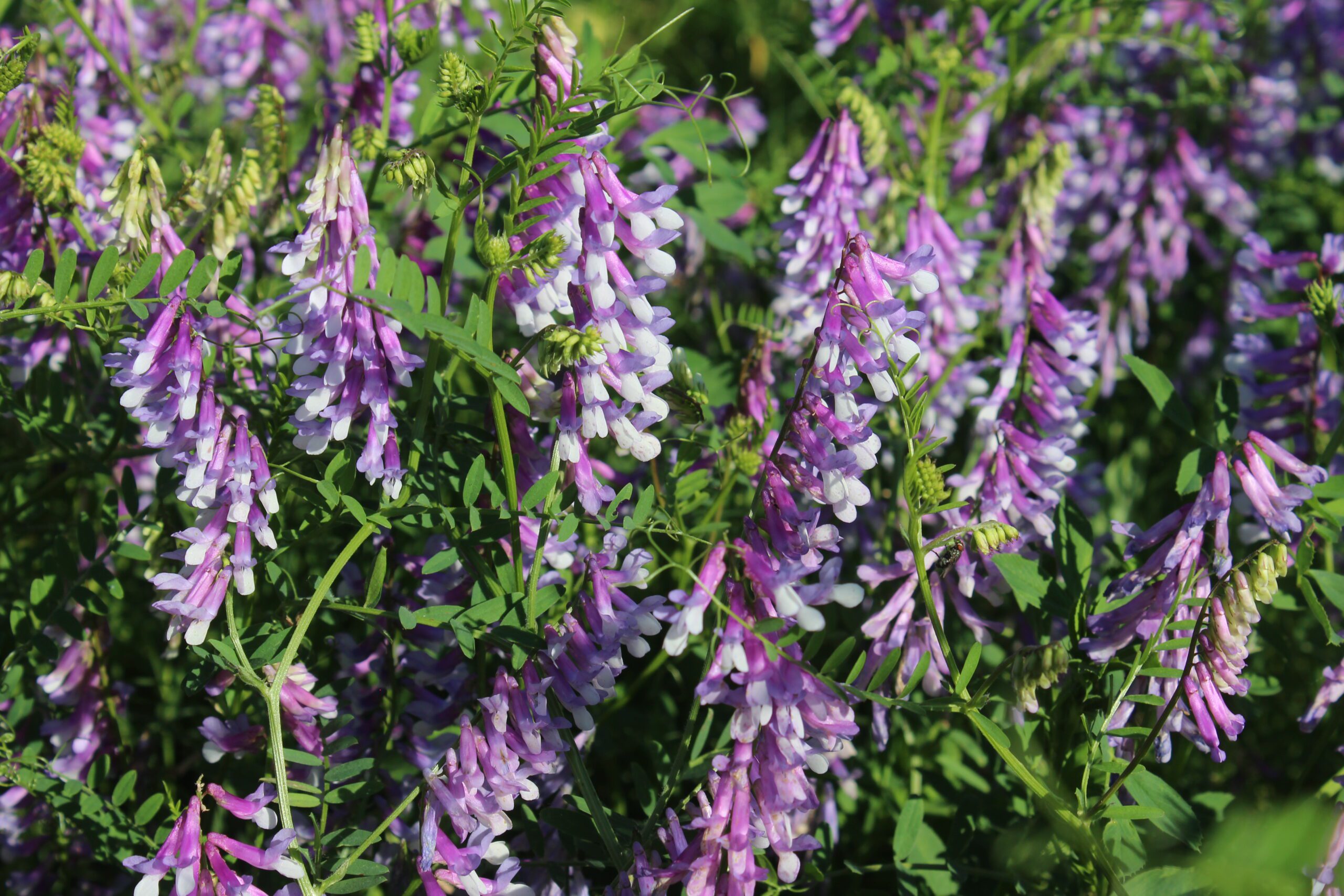
Why Is Hairy Vetch So Expensive This Year?
A few weeks ago, I wrote about the benefits of hairy vetch as a very reliable overwintering plant for fall planting and spring nitrogen production. Hairy vetch is the most popular winter legume for many reasons and it is the go-to N fixer for the majority of organic growers. As with other legumes, the price of hairy vetch has gone up over last year and I wanted to share a few of the reasons why.
1. Indeterminate Growth
I like to tell people that Hairy Vetch is the easiest crop you will ever grow and the hardest one you will ever harvest. This is a true statement as vetch will grow about anywhere for anyone – but getting it all the way to seed production and the seed in the bin is a challenge! Hairy vetch is very indeterminate – which means it is growing vegetatively and reproductively at the same time. This makes it a great cover crop as the long vegetative and blooming period makes it a great N-fixer and a great pollinator plant. However, it makes it very hard to harvest as the plant is still green and blooming when there is a mature seed that is ready. The challenge of desiccation or wind-rowing vetch and not getting it blown around or rained on is challenging indeed, and for this reason, many people give up growing hairy vetch for seed production.
2. Low Seed Yields and Higher Commodity Prices
Because hairy vetch does not yield large amounts of seed per acre – especially when you consider the aforementioned harvest challenges, the seed must be given a higher value in order to get anyone to grow it. Coupled with higher prices for all the other commodities, it just simply takes a higher price to keep fields in vetch production.
3. Pacific Northwest Drought
The majority of specialty crops like vetch and clover are typically grown in the Pacific Northwest (Oregon and Idaho) due to wet winters and dry summers which typically makes for great harvest conditions and seed quality. This area has experienced a very severe drought his year and all seed yields coming out of Oregon are lower than normal – with clover and vetch being hit hard. Lower supply always means higher prices.
4. Worldwide Logistics Issues
As much as 50% of the vetch planted in the US is typically imported from other countries. This has been very challenging this year with international shipping container shortages and bottlenecks at every international shipping port. I had one supplier tell me that just the fumigation, storage and penalty charges due to delays from the port of Seattle on some containers of vetch cost almost as much as the seed itself! Due to these extraordinarily high shipping and port charges, there is little hairy vetch being imported this year putting even more pressure on the domestic supply and driving the cost up even more.
We have worked hard to secure hairy vetch seed from growers across the country and in spite of all of these issues, we have a good supply of hairy vetch. It is not too late to plant it for spring N production. With nitrogen prices being very high, and looking to go higher, it can still make good economic sense to plant hairy vetch and expect a good return on investment. In our overwintering plots last year (planted October 1st) we saw vetch/rye mixes produce over 120 pounds of N and pure stands of hairy vetch produce over 200 pounds! Give us a call if you are interested in doing this on your ground ahead of next year’s corn crop!